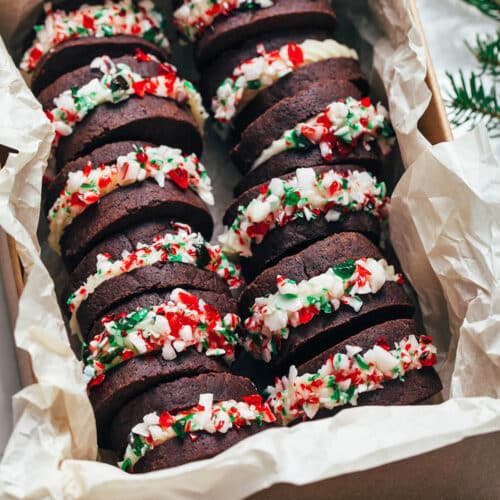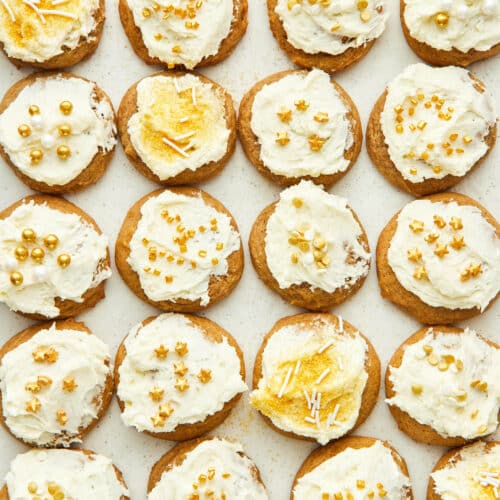A traditional Austrian and German cookie for Christmas time, hazelnut linzer cookies are a slight twist on a special winter treat. Plain linzer cookies can be a bit blah - sweet and buttery, certainly, but very much in need of the tart raspberry jam filling. This version is excellent with every bite, with pops of orange zest adding just a little kick.
For some more German recipes, try out sourdough bauernbrot, traditional stollen, and yeasted German apple sheet cake.

Jump to:
Ingredients
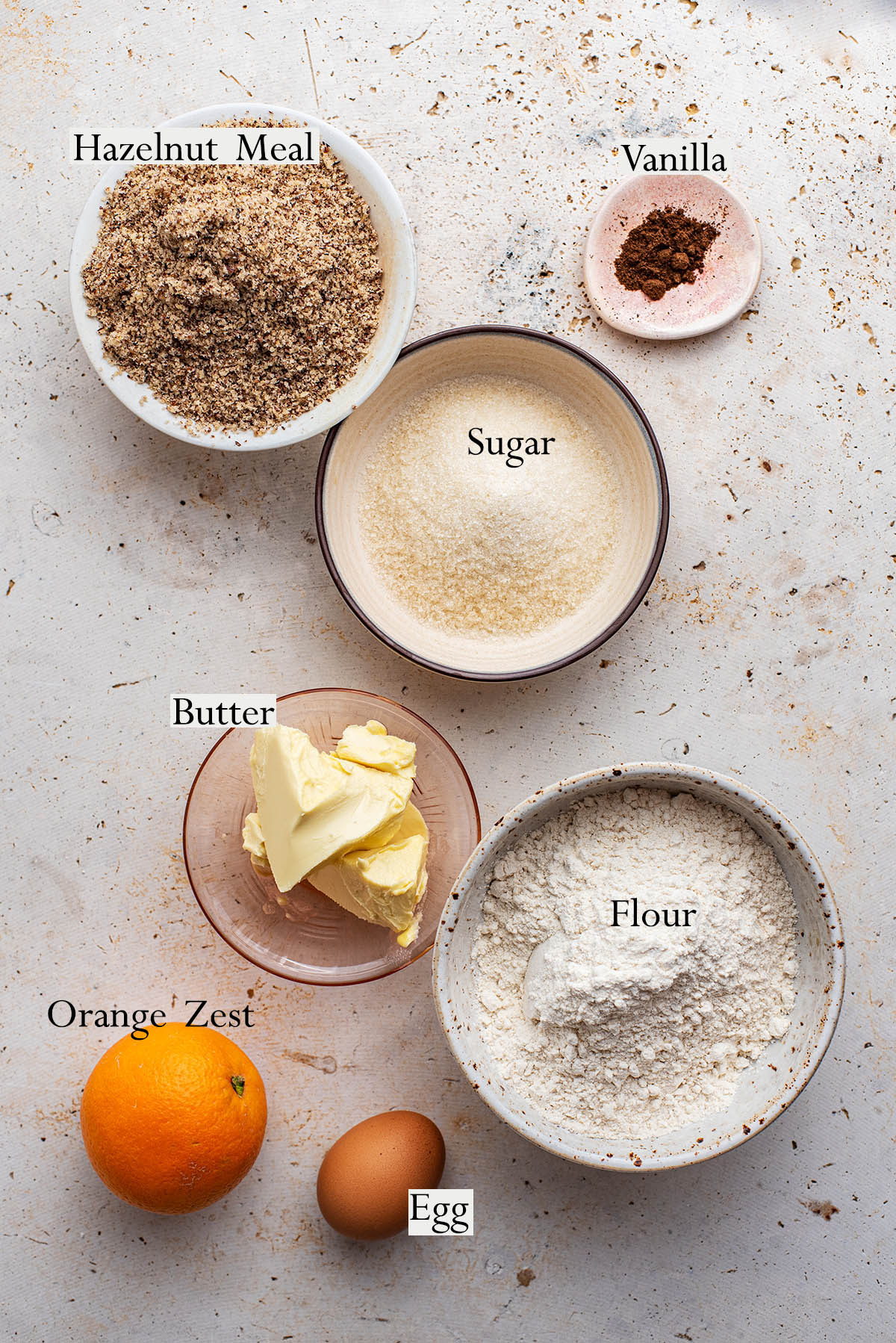
Ingredient Notes and Substitutions
- Hazelnut meal: substitute almond flour or meal for the hazelnut. This will make a more traditional linzer cookie.
- Jam: use any kind of jam filling you like. Pictured is plum jam (more often sold as plum butter in North America) but raspberry jam is more traditional. We like both with the orange hazelnut combo – chocolate spread would be nice too, but sweeter.
- Vanilla: use an equal amount of vanilla extract or paste if preferred.
- Make it dairy-free: use a good vegan butter than comes in stick or block form.
Method
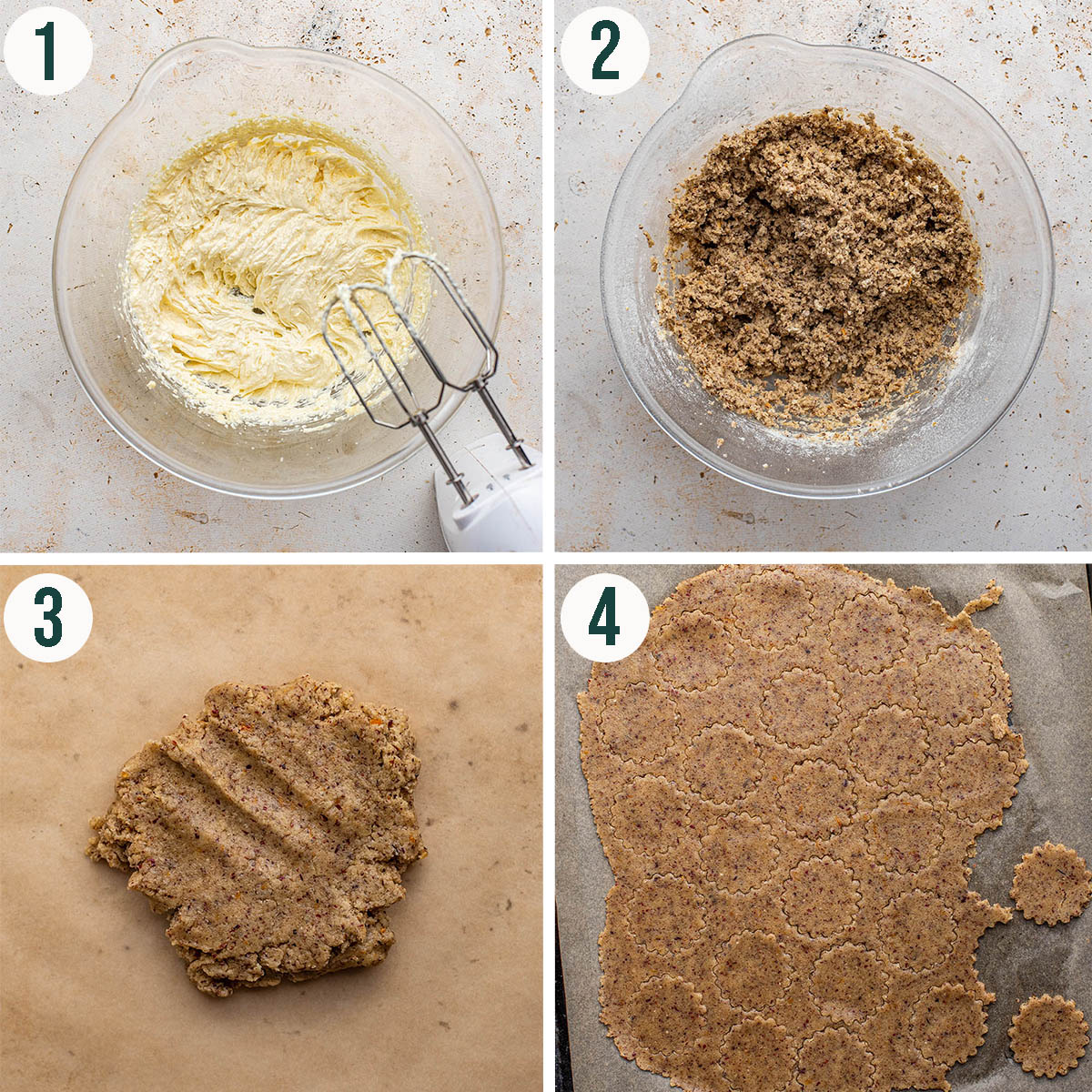
Step 1: beat together the butter and sugar until fluffy, then beat in the egg and vanilla.
Step 2: add the dry ingredients and mix into a crumbly looking dough.
Step 3: divide the dough into two pieces and press into discs.
Step 4: roll the dough out between parchment paper, then chill the dough and cut small cookies. Repeat as needed, cutting the centre hole out of half.
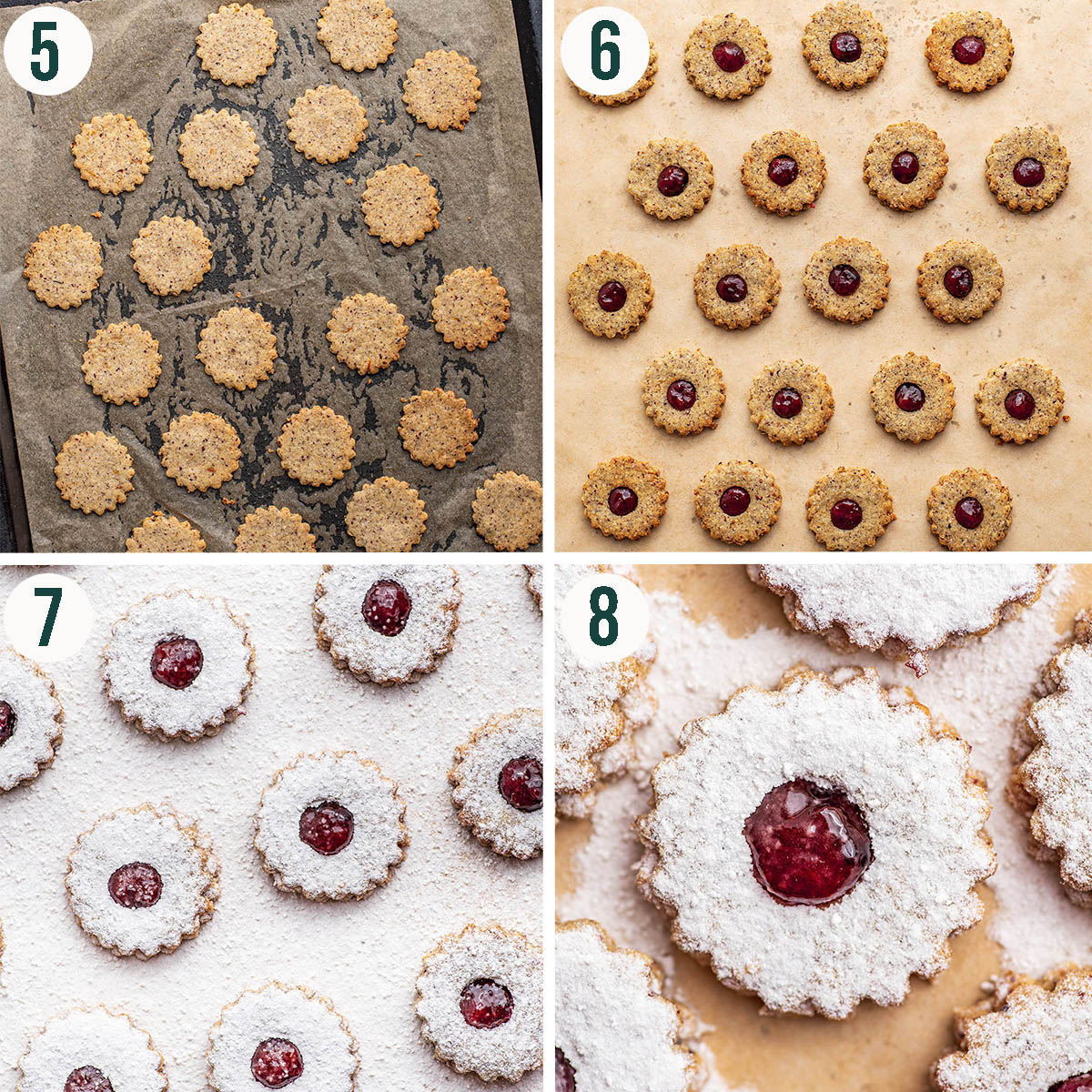
Step 5: bake the cookies for 8-10 minutes, or until just lightly golden.
Step 6: cool fully before adding small spoonfuls of jam and sandwiching the cookies.
Step 7: top with a layer of icing sugar.
Step 8: the sugar will dissolve where the jam is. The cookies are ready to serve.
Top Tips
- Lift carefully: Use a small offset spatula or butterknife to lift the cookies onto the baking sheet before baking, especially if you're using a fluted cookie cutter.
- Chill the dough: chilling the dough can't be skipped. It's too hard to cut cleanly with room temperature dough since the butter content is high, and just makes a mess. Chilling after it's rolled out makes things a bit easier.
- Chill before rolling: if you don't have the refrigerator space to chill the dough after rolling, then chill as you usually would for something like shortbread. Press the dough into a disc, wrap, and chill for half an hour before rolling and cutting.
Recipe Notes
These are rather small, slightly fiddly cookies (as many German cookies are) and are more fun to make in a group. Plan it for a day where you have plenty of time and want to make a bit of a project of it. These aren't drop cookies but they are worth making.
Rolling the dough out between two sheets of parchment makes it easier to work with since it's being rolled quite thin. If you want to make these as individual cookies rather than sandwich cookies, you can roll them to double the thickness on a floured surface instead.
How to Store
Storage: linzer cookies can be stored, with the filling, for up to a week in a sealed container.
Freezing: freeze the cookies on a tray in a single layer before transferring to an airtight container to freeze for up to a month. Thaw at room temperature and sprinkle some more icing sugar over them after thawing, as the sugar disappears after freezing.
FAQ
What are Linzer cookies made of?
Linzer cookies are made from the same ingredients as a Linzer torte. Almond meal, lots of butter, and a jam filling.
Can Linzer cookies be shipped?
Linzer cookies can be transported quite easily and are sturdy little cookies after baking, if packaged properly. Make sure to layer sheets of wax or parchment paper between cookies to prevent the jam from sticking.
Where are Linzer cookies from?
Based on the torte from Linz, Austria, they're a traditional Austrian treat. These cookies are made in German-speaking countries at Christmas time.
If you make this Hazelnut Linzer Cookie recipe or any other cookie recipes on the Baked Collective, please take a moment to rate the recipe and leave a comment below. It’s such a help to others who want to try the recipe. For more baking, follow along on Instagram, TikTok, and YouTube.
Hazelnut Orange Linzer Cookies
Equipment
- Mixing bowl
- Hand or stand mixer
- Parchment paper
- Rolling Pin
- Measuring cups and spoons
- Large piping tip optional
- Wire rack
Ingredients
- ½ cup butter at room temperature
- ½ cup sugar
- 1 large egg room temperature
- 1 teaspoon vanilla extract
- 1 ¼ cups all-purpose flour
- 1 cup hazelnut meal
- Zest of an orange
- ½ teaspoon sea salt
- Jam for filling
- Powdered sugar for topping
Instructions
- Add the sugar and butter to a large mixing bowl (or use a standing mixer). Use an electric mixer to beat on high speed until light and fluffy, 3-4 minutes.
- Add the egg and vanilla and beat again for a minute, or until very fluffy and with a slightly stiffer consistency.
- Add the flour, hazelnut meal, orange zest, and salt. Mix on low speed until a crumbly dough forms. It looks dry but isn’t.
- Separate the dough into two equal halves. Use your hands to press one half into a rough disc and place it onto a large sheet of parchment paper.
- Place another sheet of paper over the dough, and roll out to about 25×35 cm (10×14 inches). Repeat with the second half of dough, then slide them onto baking sheets and chill for about half an hour in the refrigerator.
- Preheat the oven to 350°F (180°C). Once the dough has chilled, cut the cookies into small rounds (or fluted rounds as pictured), about 4 cm (1.5 inches) across.
- For the second half of the cookie dough, cut the cookies in the same shape, then use the large end of a piping tip to cut small circles in the middle of each.
- Bake the cookies for 8-10 minutes, or until the edges are lightly golden. Cool on the pan for 5 minutes before removing carefully and cooling fully on a wire rack.
- Once the cookies are cool, add the jam filling. Place about a half teaspoon of jam onto each full cookie base, then top with the cookies that have holes cut into them, to allow the jam to peek through.
- Top the cookies with a generous dusting of icing sugar. The sugar will dissolve where it hits the jam. Store the cookies for up to a week in an airtight container, or freeze up to a month.



